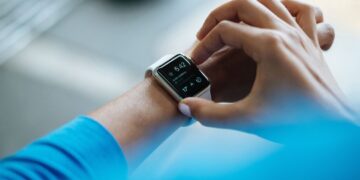Human cyborg augments
Introduction
A cyborg is a being that combines both organic and artificial components, typically including some form of mechanical or electronic enhancement. Humans can be considered cyborgs through the use of various technologies such as prosthetics, implanted devices, or wearable technology. These technologies can enhance human capabilities and abilities, blurring the lines between what is considered natural and artificial.
Types of cyborgs
There are several types of cyborgs that can exist, including:
- Augmented Humans: People who enhance their physical or cognitive abilities through technology, such as prosthetics, exosuits, or brain-computer interfaces.
- Technologically Enhanced Organisms: Living creatures that have been modified with technology, such as genetically engineered animals with enhanced abilities.Some examples of technologically enhanced organisms include:
- Genetically modified animals: Animals that have had their genes altered to enhance specific traits, such as increased strength or disease resistance.
- Cyborg insects: Insects that have been fitted with tiny electronic devices, allowing them to be remotely controlled or used for surveillance purposes.
- Enhanced plants: Plants that have been genetically modified or fitted with sensors and other technology to improve their growth, resist disease, or perform other functions.
- Humanoid Robots: Robots designed to look and behave like humans, often with advanced artificial intelligence capabilities.
- Virtual Cyborgs: People who extend their presence and abilities into virtual environments through technologies like augmented reality and virtual reality.
Virtual Cyborgs refer to individuals who extend their presence and abilities into virtual environments through technologies such as augmented reality and virtual reality. This can be achieved through a variety of means, including:
- Augmented Reality: Technology that enhances the physical world with virtual elements, such as overlaying digital information onto the real world.
- Virtual Reality: Technology that creates fully immersive digital environments, often using head-mounted displays or other forms of sensory input.
- Avatar: A digital representation of a person, often used in virtual environments to interact with others and perform tasks.
- Virtual Assistance: Artificial intelligence-powered virtual assistants that can perform tasks for individuals in virtual environments.
Through these technologies, individuals can experience new worlds, perform tasks more efficiently, and interact with others in new ways. The goal of virtual cyborgs is to enhance human abilities and extend our presence into digital environments.
- Cyborg Organisms: Living creatures that have been enhanced with technology to the point where they have characteristics of both organic and artificial beings.Some examples of cyborg organisms include:
- Bionic animals: Animals that have been fitted with electronic devices to enhance their abilities, such as increased strength or the ability to communicate with humans.
- Genetic hybrids: Organisms created by combining genetic material from multiple species, often to create new forms of life with enhanced abilities.This can be achieved through a variety of methods, including genetic engineering, crossbreeding, or hybridization. The goal of creating genetic hybrids is often to create new forms of life with enhanced abilities or to improve existing organisms by incorporating desirable traits from other species.Some examples of genetic hybrids include:
- Genetically modified crops: Crops that have been genetically modified to enhance their yield, resist disease, or improve their nutritional content.
- Hybrid animals: Animals that have been bred from two different species to create a new species with improved traits, such as increased size or strength.
- Chimera organisms: Organisms that contain cells from multiple species, often created by transplanting cells or tissues from one organism into another.
- Synthetic organisms: Living creatures created entirely from synthetic materials, such as chemically derived cells.This can involve the creation of new forms of life or the modification of existing organisms to make them entirely synthetic. Synthetic organisms are designed to perform specific tasks or functions, such as producing chemicals, breaking down pollutants, or functioning as bioreactors.Synthetic biology, the field of science and engineering that deals with the design and construction of new biological parts, devices, and systems, plays a significant role in the creation of synthetic organisms.By combining biology and engineering, scientists can create new life forms that have desired properties and functions. Synthetic organisms are being used in a variety of applications, from producing chemicals to cleaning up pollutants, and have the potential to revolutionize the way we live and work. An example of a synthetic organism is a bacterium that has been engineered to produce a specific chemical. This can be achieved by adding or modifying genes within the bacterium’s genome to express the desired traits. The modified bacterium can then be used as a bioreactor to produce the desired chemical, creating a more efficient and sustainable process compared to traditional chemical production methods.
Augments
- Prosthetics: artificial limbs that can be controlled by the wearer
- Bionic limbs: advanced prosthetics with motorized joints and sensors that can be controlled by the wearer
Bionic limbs are advanced prosthetics that mimic the natural movement of human limbs. They typically consist of a metal frame, motorized joints, and sensors that can be controlled by the wearer. Bionic limbs may also be equipped with sophisticated features such as touch sensors, allowing the wearer to feel sensations such as pressure and temperature.
These devices use advanced technology to provide greater functionality and improved mobility compared to traditional prosthetics. They may be powered by batteries and controlled by muscle signals, or they may be connected directly to the wearer’s nervous system. Bionic limbs are typically custom-fit to the wearer’s body and can be designed to look and function like a natural limb. They can be used to replace missing limbs due to injury or congenital conditions.
- Upper-limb prosthetics: including hands, arms, and shoulders
Upper-limb prosthetics are artificial devices designed to replace missing or non-functioning arms, hands, and shoulders. They can range from simple hooks or split hooks to highly advanced bionic arms with motorized joints and sensory feedback.
Some upper-limb prosthetics are designed to be passive, meaning they can provide support for the limb but do not have any moving parts. Others are active, meaning they have motorized joints and can be controlled by the wearer. These devices may use a combination of sensors, muscle signals, and electrical impulses to enable movement and control.
Advanced upper-limb prosthetics can be fitted with fingers that can grip and hold objects, or they may be equipped with touch sensors that provide sensory feedback. They can also be designed to look like a natural limb, with a cosmetic cover that matches the wearer’s skin tone.
- Lower-limb prosthetics: including legs, feet, and kneesLower-limb prosthetics are artificial devices designed to replace missing or non-functioning legs, feet, and hips. They can range from simple passive devices, such as a cosmetic prosthetic leg, to highly advanced bionic legs with motorized joints and sensory feedback.Advanced lower-limb prosthetics can be fitted with ankles and feet that can adjust to different surfaces and provide a more natural walking gait. They can also be equipped with microprocessors and sensors that can adapt to the wearer’s movements and provide stability.
- Osseointegration: a surgical technique that attaches a prosthetic directly to the bone, improving stability and control. The process involves inserting the implant into the bone and allowing it to integrate, or fuse, with the surrounding bone tissue. This creates a strong bond that provides stability and support for the prosthesis.
- Myoelectric prosthetics: powered by electrical signals from the wearer’s muscles
Myoelectric prosthetics are artificial limbs controlled by the electrical signals generated by the wearer’s muscles. These signals are detected by electrodes placed on the skin and then processed by a microprocessor to control the movement of the prosthetic limb. The prosthetic limb can perform functions such as gripping, releasing, and opening and closing, in response to the electrical signals generated by the wearer’s muscles. Myoelectric prosthetics provide a more natural and intuitive way of controlling an artificial limb compared to traditional prosthetics.
- Robotic exoskeleton: wearable devices that can assist physical movement and enhance strength. A robotic exoskeleton is a wearable device that provides support and assistance to the wearer’s limbs, allowing them to perform physical tasks they would otherwise be unable to do or to perform the same tasks with less effort. The exoskeleton consists of a frame that fits around the wearer’s body and is powered by motors, hydraulic systems, or other actuators. It enhances the wearer’s strength and mobility by augmenting their natural movements. There are two main types of exoskeletons: passive exoskeletons, which simply provide support and assistance, and active exoskeletons, which actively control and generate movements. Robotic exoskeletons can be used for a variety of purposes, such as helping people with mobility impairments walk, assisting manual laborers in performing heavy lifting tasks or enhancing the physical abilities of soldiers and athletes.
- Bionic limbs: advanced prosthetics with motorized joints and sensors that can be controlled by the wearer
- Neural implants: devices that can be implanted in the brain to enhance cognitive function or treat conditions such as Parkinson’s
- Brain-computer interfaces (BCIs): devices that can read brain activity and translate it into commands for computers or prosthetics.
- Deep brain stimulation (DBS) implants: used to treat conditions such as Parkinson’s disease and depression by delivering electrical stimulation to specific areas of the brain.
- Cochlear implants: devices that can restore hearing by directly stimulating the auditory nerve. A cochlear implant is a medical device that provides a sense of sound to a person who is profoundly deaf or hard-of-hearing. It consists of an external portion that sits behind the ear, and an internal portion that is surgically implanted under the skin. The external portion of the implant picks up sounds from the environment and converts them into electrical signals, which are then transmitted to the internal portion of the implant. The internal portion of the implant converts the electrical signals into a sound that is sent to the auditory nerve, allowing the person to perceive and understand speech and other sounds. Cochlear implants bypass damaged parts of the inner ear and directly stimulate the auditory nerve, providing a sense of sound to people who would otherwise be unable to hear.
- Retinal implants: devices that can restore vision by electrically stimulating the retina A retinal implant is a medical device that provides a sense of vision to a person who is blind or has severe vision loss due to retinal diseases such as age-related macular degeneration or retinitis pigmentosa. The implant consists of a small electronic device that is surgically implanted in or on the retina, and an external camera and processing unit that the person wears or carries. The camera captures images from the environment and converts them into electrical signals, which are then transmitted to the implant. The implant converts the electrical signals into patterns of light that are projected onto the retina, allowing the person to perceive and understand visual information. Retinal implants bypass damaged parts of the retina and directly stimulate the remaining healthy photoreceptor cells, providing a sense of vision to people who would otherwise be unable to see.
- Spinal cord stimulation (SCS) implants: used to treat chronic pain by delivering electrical stimulation to the spinal cord. Spinal cord stimulation (SCS) is a medical therapy that involves the implantation of a device that delivers electrical stimulation to the spinal cord to treat chronic pain. The implant consists of a small generator, which is implanted under the skin, and electrodes that are surgically placed on the spinal cord. The generator sends electrical impulses to the electrodes, which in turn activate nerve fibers in the spinal cord and interfere with the transmission of pain signals to the brain. This results in a reduction in pain sensation for the patient. SCS is used to treat a variety of conditions, including chronic back and leg pain, complex regional pain syndrome, and failed back surgery syndrome. The stimulation can be adjusted or turned off as needed, making it a reversible and flexible option for treating chronic pain.
- Vagus nerve stimulation (VNS) implants: used to treat conditions such as epilepsy and depression by delivering electrical stimulation to the vagus nerve.
Vagus nerve stimulation (VNS) is a medical therapy that involves the implantation of a device that delivers electrical stimulation to the vagus nerve in the neck. The vagus nerve is one of the largest nerves in the body and plays a key role in regulating various physiological functions, including heart rate, digestion, and respiration. VNS is used to treat epilepsy, depression, and other neurological disorders.
The implant consists of a small generator, which is implanted under the skin in the chest, and electrodes that are surgically placed on the vagus nerve in the neck. The generator sends electrical impulses to the electrodes, which in turn stimulate the vagus nerve. The stimulation is thought to modify the activity of certain nerve pathways in the brain that are involved in regulating mood, cognition, and other functions. This results in a reduction of symptoms for the patient. VNS is a reversible and adjustable treatment option, and the stimulation can be adjusted or turned off as needed.
- Exosuits: wearable devices that can assist physical movement and enhance strength
- Industrial exosuits: designed to enhance the strength and endurance of workers in manual labor jobs
- Medical exosuits: used to assist patients with mobility and support their movements
- Military exosuits: designed to enhance the physical abilities of soldiers in combat scenarios
- Rehabilitation exosuits: used to assist patients in physical therapy and rehabilitation after injury or illness
- Sports exosuits: designed to enhance the performance of athletes in various sports activities.
- Biomedical implants: devices such as pacemakers, insulin pumps, and cochlear implants to treat medical conditions
- Pacemakers: devices that regulate the heartbeat and treat conditions such as heart arrhythmias
- Insulin pumps: devices that deliver insulin to treat diabetes
- Cardiac defibrillators: devices that deliver an electric shock to restore a normal heartbeat in case of sudden cardiac arrest
- Infusion pumps: devices that deliver medications or other treatments directly into the bloodstream
- Implantable hearing aids: devices that amplify sound for those with hearing loss
- Neurostimulators: devices that deliver electrical stimulation to treat conditions such as chronic pain and depression.
- Augmented reality devices: wearable devices that overlay digital information on the real world
- Smart glasses: wearable devices that display digital information in the user’s field of view
- Head-mounted displays (HMDs): devices that display a virtual reality environment to the user
- Contact lenses: lenses with embedded technology to display information or enhance vision
- Handheld devices: such as smartphones and tablets that support augmented reality apps
- Smart clothing: clothing embedded with technology to display information or enhance physical performance.
- Cosmetic modifications: such as tattoos, piercings, and surgically altered features.
- Tattoos: permanent markings on the skin created by injecting ink
- Piercings: permanent openings in the body created by inserting jewelry
- Plastic surgery: procedures to alter the appearance of body parts, such as the face, breasts, and abdomen
- Dermal fillers: injections that add volume to the face or lips
- Hair transplants: surgical procedures to restore hair growth on the scalp
- Teeth whitening and alignment: cosmetic dental procedures to enhance the appearance of teeth.
Human cyborg augments
Author: Δ Emad Najafidehaghani Δ
If you found any mistakes in the article please let me know.

















